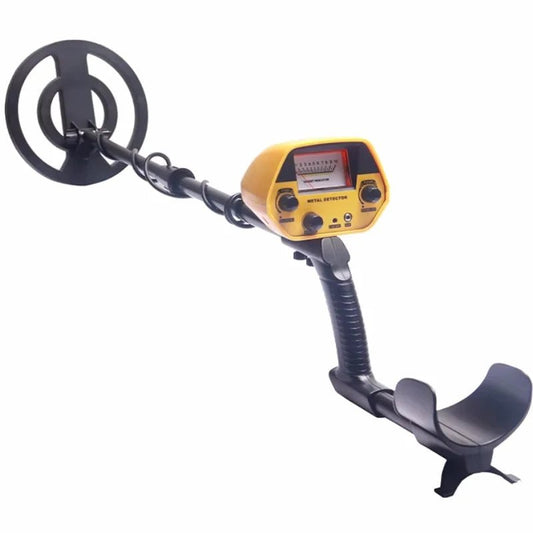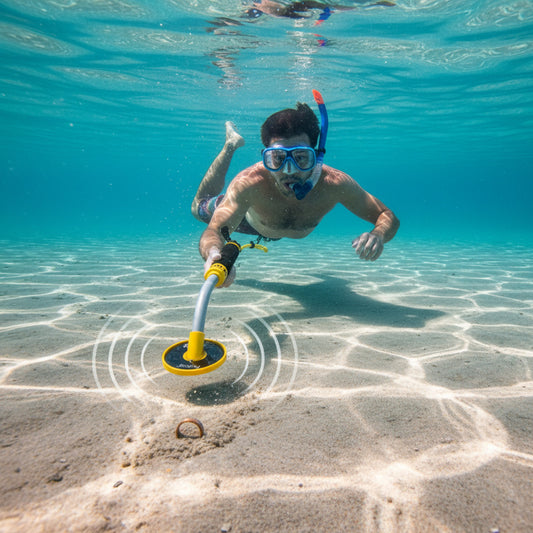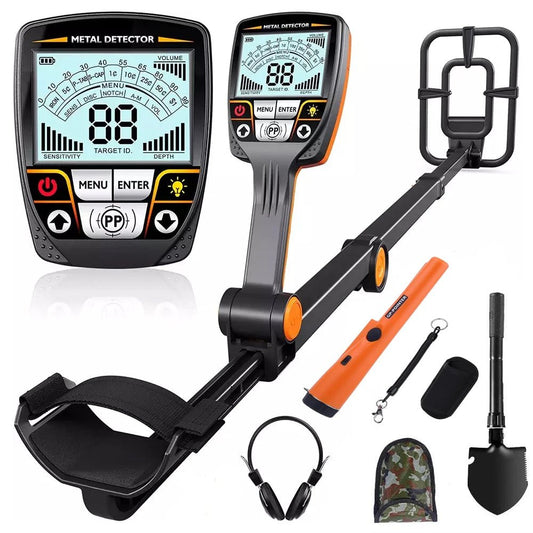
Metal Detecting Techniques: A Comprehensive Guide for Treasure Hunters
Share
Metal detecting is an exciting hobby that combines the thrill of treasure hunting with outdoor exploration.
Whether you're a beginner or an experienced detectorist, mastering various metal detecting techniques can significantly improve your success rate.
This comprehensive guide will explore the most effective metal detecting techniques, helping you uncover more treasures in 2025 and beyond.
1.) The Proper Sweep Technique

One of the most fundamental metal detecting techniques is the proper sweep:
- Keep the search coil parallel to the ground
- Maintain a consistent height of about 1-2 inches above the surface
- Move the detector in a slow, steady arc from side to side
- Overlap each sweep slightly to ensure full coverage
Pro Tip: Practice your sweep in your backyard to develop muscle memory.
2. Grid Search Method
The grid search is one of the most systematic metal detecting techniques:
- Divide your search area into a grid pattern
- Search each grid square thoroughly before moving to the next
- Use markers or GPS to track your progress
- This technique ensures you cover the entire area without missing spots.
3. Pinpointing Technique

Accurate pinpointing is crucial for efficient digging:
- Once you get a signal, sweep the coil in an "X" pattern over the target
- Listen for the strongest signal at the center of the X
- Use a handheld pinpointer for precise location in the hole
- Mastering this technique minimizes ground disturbance and saves time.
4. Discrimination Settings

Proper use of discrimination settings is among the advanced metal detecting techniques:
- Start with low discrimination to find all metals
- Gradually increase discrimination to filter out unwanted targets
- Adjust settings based on your specific hunting goals and location
- Remember, high discrimination might cause you to miss valuable targets.
5. Ground Balancing

Ground balancing is essential, especially in mineralized soil:
- Use automatic ground balance if your detector has this feature
- For manual balance, follow your detector's specific instructions
- Re-balance when moving to areas with different soil composition
- This technique helps reduce false signals and improves depth detection.
6. Beach Detecting Technique

Beach hunting requires specific metal detecting techniques:
- Use a pulse induction or multi-frequency detector for salt water beaches
- Search at low tide for the best results
- Pay attention to the wet sand area where items often accumulate
Don't forget to check local regulations before beach detecting.
7. Woodland Detecting Technique

Metal detecting in wooded areas presents unique challenges:
- Use a smaller coil for better maneuverability
- Focus on clearings, old paths, and around large trees
- Be prepared to dig deeper, as objects in woods tend to sink over time
Always obtain permission before detecting in forested areas.
8. Deep Seeking Technique

For finding deeper targets:
- Use a lower frequency detector
- Increase the sensitivity of your detector
- Move the coil more slowly over the ground
Be patient, as deep targets often produce fainter signals
9. Target Recovery Technique
Proper recovery is crucial for preserving both the find and the site:
- Use a probe to precisely locate the target in the hole
- Cut a clean plug and place it on a drop cloth
- After retrieving the target, replace the plug carefully
- Leave the site as you found it
This technique is essential for responsible metal detecting.
Combining Metal Dertecting Techniques for Maximum Success
The most successful detectorists combine various metal detecting techniques:
- Use the grid method for thorough coverage
- Apply proper sweep and pinpointing for accurate target location
- Adjust discrimination and ground balance for optimal performance
- Recover targets responsibly to preserve sites
Remember, practice is key to mastering these techniques.
Conclusion: Honing Your Metal Detecting Skills
Mastering these metal detecting techniques will significantly enhance your treasure hunting success. From the basic sweep to advanced discrimination and research methods, each technique plays a crucial role in uncovering hidden treasures.
Remember that becoming proficient in these techniques takes time and practice. Don't get discouraged if you don't find valuable items immediately. Each outing is an opportunity to refine your skills and enjoy the thrill of the hunt.
As you continue to develop your metal detecting techniques, you'll not only improve your chances of making exciting finds but also contribute to the preservation and understanding of local history. So grab your detector, apply these techniques, and embark on your next treasure hunting adventure. Happy detecting!




